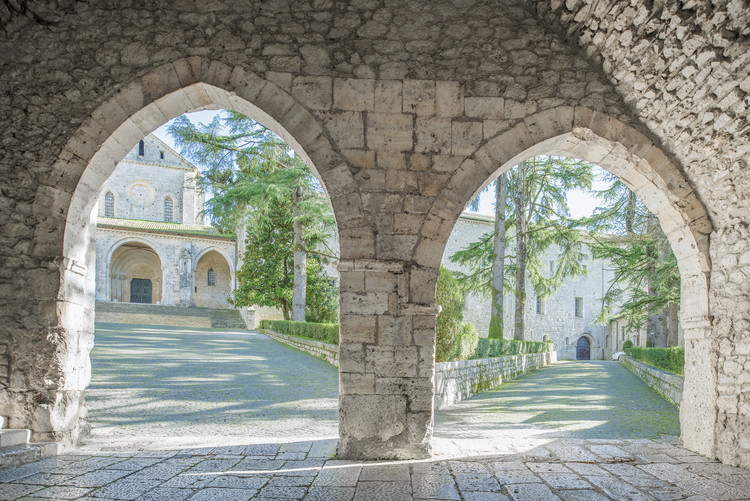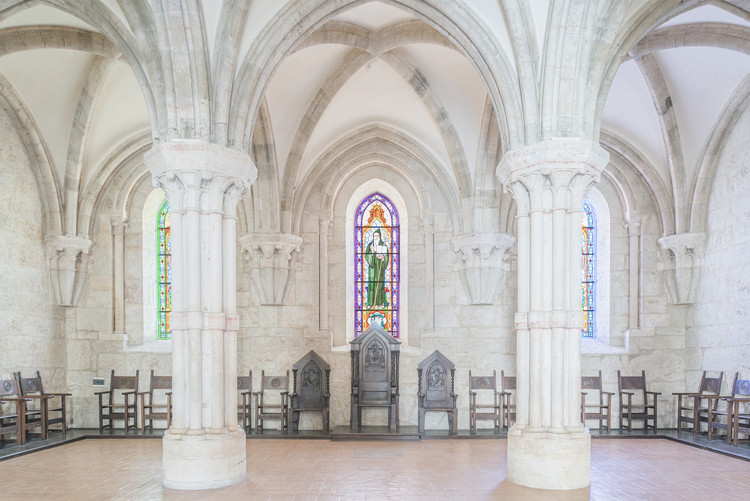
In his latest photographic collection, Federico Scarchilli captures Cistercian order in the form of Abbazia di Fossanova, Casamari, and Valvisciolo. Simple and utilitarian, Cistercian architecture reflects the transition between the Romanesque and Gothic periods. During this time, many religious authorities felt excessive ornamentation was a distraction to spiritual studies.

Abbazia di Fossanova
Consecrated in 1208, Abbazia di Fossanova is considered by many to be one of the best examples of Cistercian architecture. The abbey is cruciform with square-ends. Carefully carved capitals line the nave which frames the adored rose window.

Abbazia di Casamari
Abbazia di Casamari is often compared to Fossanova. A double arched entry leads to gardened cloisters which the church itself is accessible from. The abbey’s plan is of true basilica form complete with a central nave and two aisles.





Abbazia di Valvisciolo
Abbazia di Valvisciolo also has a nave and two aisles but at the end of the north nave is the Chapel of Saint Laurence. The Chapel is adorned with “il Pomarancio,” painted frescoes by Niccolò Circignani. In the rectangular apse, open arches are supported by stout pilasters.






















